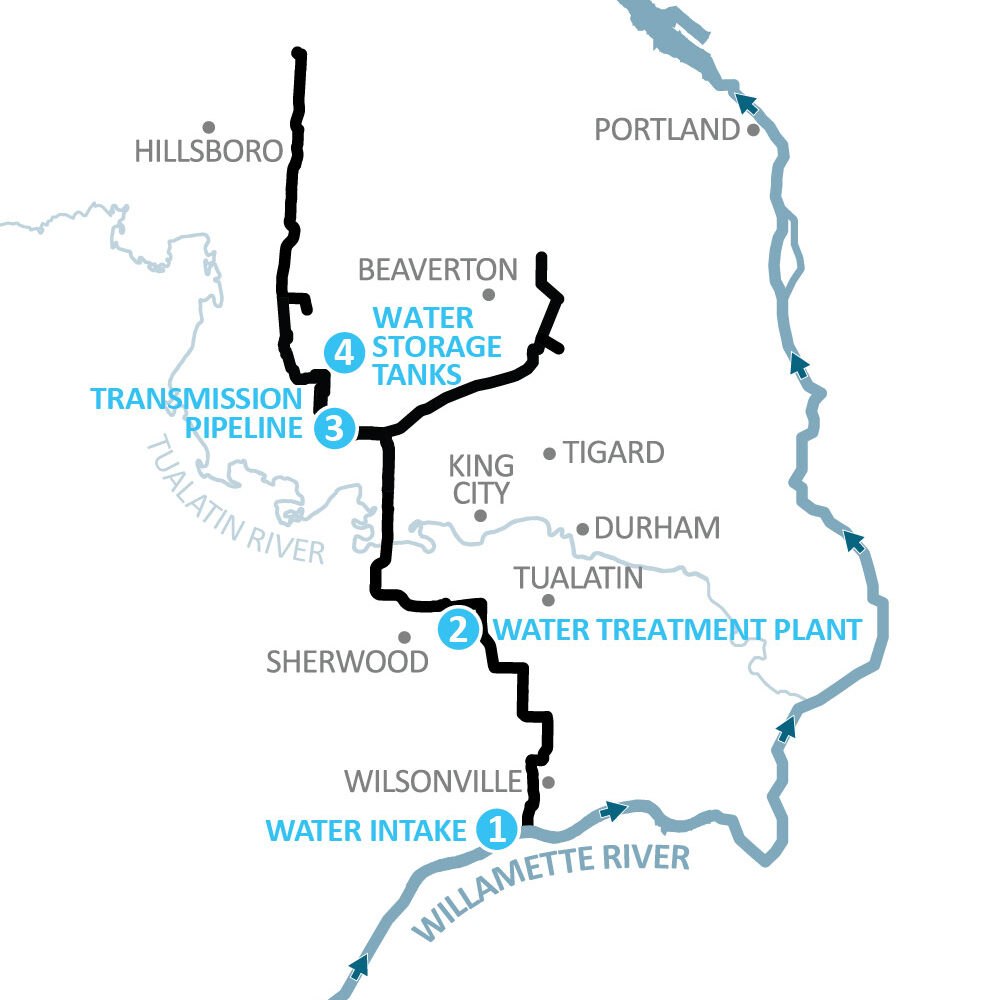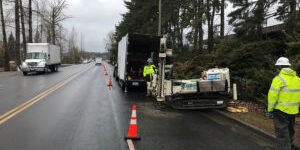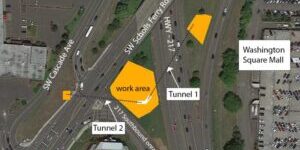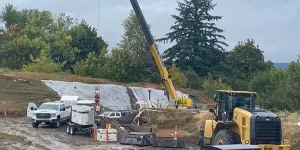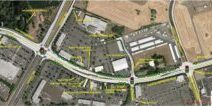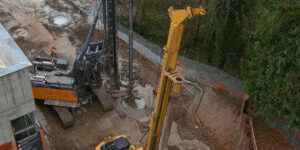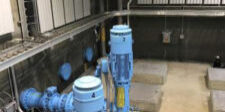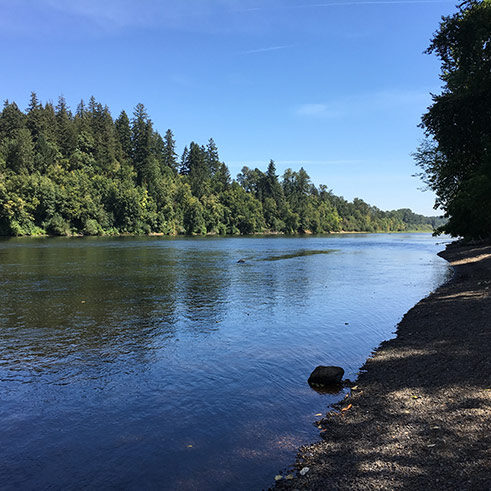
You could call it the most “boring” part of installing a more than 30-mile water pipeline from an intake facility in Wilsonville to its final destination in Hillsboro. But it’s also the most ambitious — and technically challenging — for the Willamette Water Supply Program.
This week, crews from Ward & Burke Tunneling Ltd. are planning to crank up a micro tunnel boring machine for a 2,000-foot journey where it will travel from the south side of the Tualatin River off of Southwest Roy Rogers Road to the north side of the river.
The plan is to push through reinforced-concrete casing pipe (which will protect the actual pipeline) drilling through with the help of an 84-inch micro tunnel boring machine. That machine — which can retail for as much as $7 million — is expected to make short order of the sand and silt it encounters along the way.
“Once they complete (the liner) we get to put our pipe in, which is what they call the ‘carrier pipe,’ and that will actually be carrying the (treated Willamette River) water through the tunnel,” said David Marciniak, public and business outreach specialist for the Willamette Water Supply Program.
The launch site for the tunneling is a 42-foot-deep concrete shaft where the boring machine will push through to the north, dropping down to 95 feet at the reception site after going under the river and crossing to the opposite side of Roy Rogers Road.
The Tualatin River flows just south of Al’s Garden & Home Center. Schaumburg Bridge crosses the river, carrying traffic along Roy Rogers Road, in between the garden center and Sherwood.
Inside that launch site shaft are two hydraulic rams, said Sean O’Keeffe, who is heading the project for Ward & Burke Tunneling, during a Jan. 19 tour of the site.
“That’s what we use to push and advance (the drill head),” said O’Keeffe, a native of Ireland, where Ward & Burke Tunneling’s head office is located.
Including the hydraulic power pack that runs it, the drill head weighs a whopping 40 tons, O’Keeffe said. That’s heavier than some commercial airliners. The drill head itself is 14 feet long, about the length of a typical sedan.
The carbide tips on the microboring machine are “can pretty much excavate anything we encounter,” O’Keeffe said.
The type of material they expect to encounter along the way is mostly sand and silt, along with some clay as the machine digs deeper during a 7.7% grade of descent before it reaches its destination, said O’Keeffe.
The boring machine is laser-guided and remotely controlled inside a crane aboveground, so no tunnel operator ever has to go down the drilling shaft.
The drill head that will be used in the boring project was first used in 2016. It has created about 10 tunnels, according to O’Keeffe.
If everything goes as planned, the crew hopes to install an estimated 65 feet of pipeline per day. The tunneling and pipe installation should be complete in 75 days. The Roy Rogers Road section of the pipeline project is scheduled for completion by June of 2024.
The entire water project will begin delivering water to customers in 2026.
Read the article here. Valley Times Ray Pitz Jan 25, 2023

